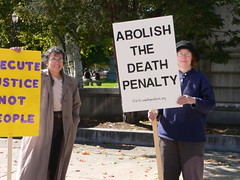 Nearly one in five Americans think President Obama is a Muslim, according to ABC News:
Nearly one in five Americans think President Obama is a Muslim, according to ABC News:
The new poll from the nonpartisan Pew Forum on Religion and Public Life found that 18 percent of those surveyed wrongly identified Obama as Muslim, up from 11 percent in March 2009. At the same time, the number of Americans who knew correctly that Obama is Christian has declined from 48 percent in March 2009 to 34 percent today. But 43 percent of Americans now say they don’t know what Obama’s religion is at all.
The finding has even prompted a response from the White House.
“The president is, obviously, he’s Christian. He prays every day,” White House spokesman Bill Burton said today aboard Air Force One.
“He communicates with his religious advisor every single day,” Burton said. “There’s a group of pastors that he takes counsel from on a regular basis. His faith is very important to him, but it’s not something that’s a topic of conversation every single day.”Burton said the president has talked “extensively” about his faith in the past and “you can bet he’ll talk about his faith again.” But “making sure Americans know what a devout Christian he is” is not the president’s top priority.
Despite such statements, sociologists have reason to doubt such misperceptions can be so easily overcome.
“I think the reality is that false beliefs spread like gossip more than actual information,” said Andrew Perrin, an associate professor of sociology at the University of North Carolina, Chapel Hill.
Perrin’s research has shown that a false perception can spread quickly if people’s friends and neighbors also have heard or believe a similar idea.
“False beliefs propagate when people think others believe them and when they have a supportive source that wants them to hold it,” Perrin said.
Perrin has found that even direct denials of the false information do not always solve the problem.
“In my own research, when [people] get reliable information that discounts these beliefs, they tend to cling to those beliefs more,” Perrin said.







